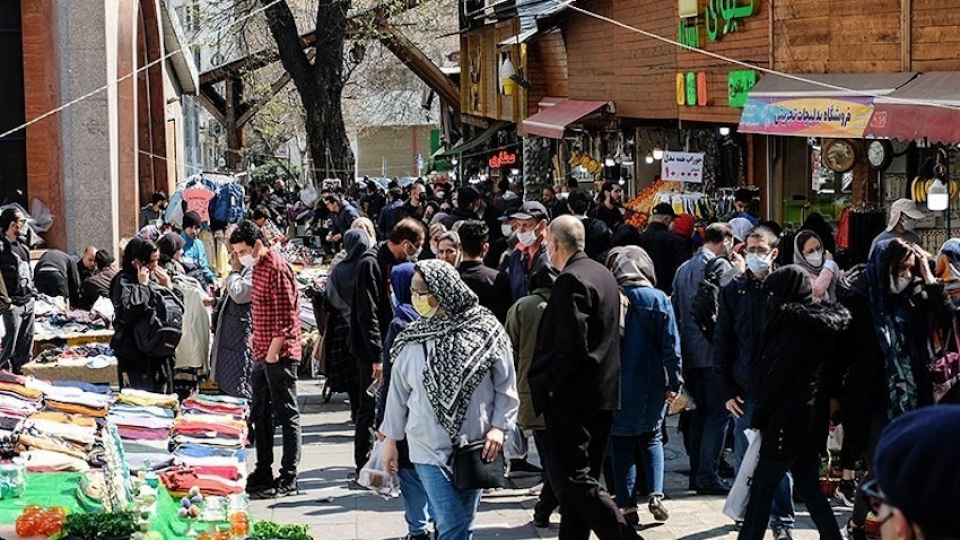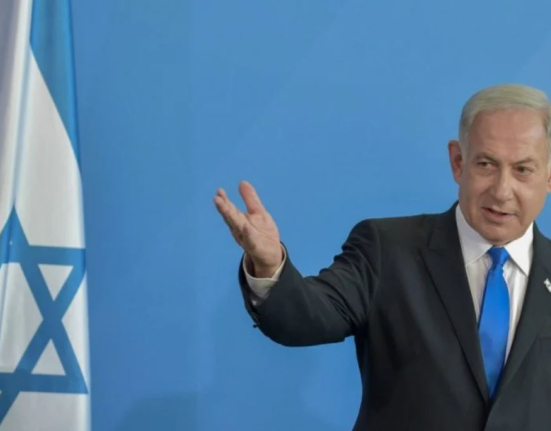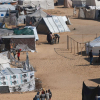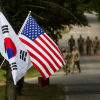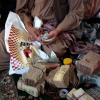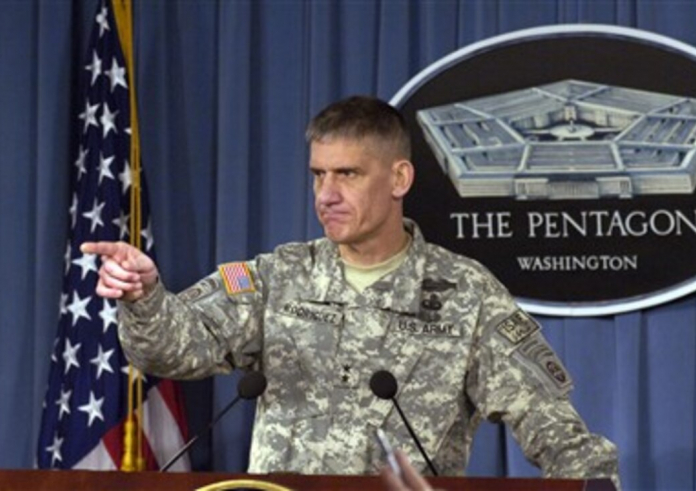
After years of intense competition, the China-brokered Mar. 10 agreement between Iran and Saudi Arabia to reopen embassies within two months has the potential to significantly ease tensions. The accord also sets the stage for the normalization of relations between the two regional powers.
Much has been written about the geopolitical challenges and benefits of the deal. There is little doubt that Iran’s primary motivation in pursuing the agreement is focused on the security upsides of de-escalation in the region. This focus is shared by the Kingdom, which views peace as a means to pursue its Vision 2030 economic diversification agenda.
It is also clear that the Iranian strategy of regional de-escalation is in full swing, which explains why Ali Shamkhani—the secretary of Iran’s Supreme National Security Council (SNSC)—traveled to both Iraq and the United Arab Emirates (UAE) following his trip to China. However, considering the fact that reviving the economy will likely be the Islamic Republic’s top priority over the next few years, the question is whether the agreement with the Kingdom will help in economic terms.
The short answer is yes. Evidently, de-escalation will reduce the cost of regional security for all parties and free up more potential for trade and cross-border investments and partnerships that the region needs. Notwithstanding, a closer look can help assess actual opportunities as well as obstacles and present a more nuanced outlook.
Overcoming initial barriers
At the current juncture, what Tehran needs is investment and it is clear that the Kingdom has recognized this. Only a few days after the signing of the agreement in China, on Mar. 15, Saudi Finance Minister Mohammed Al-Jadaan opined, "There are a lot of opportunities for Saudi investments in Iran. We don't see impediments as long as the terms of any agreement would be respected." His comments echo previous claims that Crown Prince Mohammed bin Salman Al Saud (MbS) had in 2021 signaled to Iran’s President Ebrahim Raisi that a normalization of ties could entail up to 20B USD in Saudi investment.
As such, Jaddan’s statement is an important indication of underlying political will at the highest level in Saudi Arabia. Yet experts agree that US sanctions could pose a challenge to some Saudi enterprises interested in engaging the Iranian market.

More specifically, a number of regional stakeholders—especially mid-level technocrats and members of the Gulf Cooperation Council (GCC) business community—have privately told Amwaj.media that as long as the current banking restrictions are in place, there will be no significant growth in investments from GCC countries in Iran. The other challenge is ingrained in Jadaan’s comments, namely the legal and operational ambiguities that foreign investors face in Iran.
Considering these impediments, the main actors in the initial phase of any broader GCC economic re-engagement with Iran will likely be governments. Their key task will be to put in place constellations that can facilitate feasible trade and investment scenarios. The core objectives must be to immunize the envisioned investments from US sanctions as well as legal and operational challenges.
Likely areas of focus
Mindful of the barriers to engagement with the Iranian market, the initial wave of GCC investments could take shape in non-sanctioned industries, such as food and pharmaceuticals, followed by other sectors where creative banking and financial solutions would be put in place. Riyadh could potentially also seek waivers from Washington to realize strategically significant projects, including investments to address regional environmental challenges such as water scarcity and the effects of climate change.
Considering the fact that both sides are engaged in economic diversification, there are additionally a number of opportunities in other sectors. One such sector is the mining industry. Of note, Iran has ambitious investment projects in the sector and Saudi investors could certainly profit from the availability of a number of mineral products in their diversification drive.

Two major oil producers, cooperation between Iran and the Saudi Arabia in the petroleum sector is another potential area for collaboration. Though conventional wisdom holds that the scope for cooperation between two competitors is limited, new geopolitical and energy sector realities could make collaboration worthwhile.
Indeed, the two petroleum sector heavyweights could partner to complete their respective value chains, moving away from oil and natural gas towards petroleum products and petrochemicals. The fact that Saudi Aramco CEO Amin Nasser views the agreement between Iran and Saudi Arabia signed in China as a positive development will certainly help enable future joint projects including swap deals that could increase the efficiency of operations.
Expanding cooperation to third arenas
Beyond the direct bilateral cooperation in Iranian and Saudi markets, there is plenty of scope for mutually beneficial collaboration involving third parties or taking shape abroad.
For instance, experts believe that many opportunities exist for joint mining projects in third countries that could generate jobs and economic impetus in the region and build trust between Iranian and Saudi enterprises.
In the energy sector, one tangible project would be to finalize a trilateral agreement between Kuwait, Saudi Arabia and Iran on the offshore Dorra/Arash natural gas field, which would be a win-win-win example for the region. One major stumbling block to such collaboration was removed last year, when Kuwait and Saudi Arabia agreed to develop the field. Though Iran objected to the arrangement on the basis of its exclusion, it can reasonably be argued that the scope for a trilateral accord is higher today than it was in 2022. Notably, there is precedent for how to approach such a shared resource; building not only on the Kuwaiti-Saudi accord, but also by looking at how Iran and Oman are developing the Hengam field.
Connecting the respective electricity grids would also have major advantages for Riyadh and Tehran. The bridge to bring about interconnectivity would be Iraq, which relies on Iranian electricity to meet some 10% of demand, and Iranian gas to generate about a third of its supply. As the Iraqi grid is set to be connected to that of the GCC next year, integrating Iran into the arrangement would be very feasible. Such connectivity would introduce opportunities in power trading between the various players, with different peak times for consumption paving the way for meaningful trade in the electricity sector.
Saudi investments could also promote the emerging transit sector in Iran—a development that would also benefit the growing trade between Russia and the GCC economies. Such projects could translate into increased interconnectivity by sea, rail and road and include already envisaged projects such as the Shalamcheh-Basra rail link which in due course has the potential of moving pilgrims between Mashhad and Karbala, and also Mecca.

As Amwaj.media reported in Oc. 2021, talks between Iranian and Saudi delegations in Baghdad at the time saw the Iraqi side bring up the idea of an “international highway” connecting Mashhad—the largest pilgrimage site in Iran—and Mecca—the most important center for all Muslims—via the holy city of Karbala in Iraq. Improving rail and road infrastructure could also increase the number of religious pilgrimages between the neighbors—a development that would promote further cultural, religious and social ties.

Importantly, Iranian experts also believe that improved relations with the Kingdom could pave the way for better trade relations with other regional powers, especially Egypt. In this context, Iran’s export-driven economic development with a focus on the region would greatly benefit from access to major untapped markets.
Looking ahead
It is clear that there are multiple opportunities for Saudi Arabia to invest in Iran and help it exit the negative trajectory of its economy. At the same time, many warn that de-escalation with the Kingdom won’t compensate for the non-restoration of the 2015 Iran nuclear deal.
In this vein, former Iranian ambassador to France Abolghassem Delfi has opined that sanctions relief will only take place with the revival of the nuclear accord, and that “it is premature to think that the agreement with Saudi Arabia is a substitute.”
After years of heightened regional tensions, normalization between Iran and Saudi Arabia could return Tehran to its original regional strategy, focused on energy and trade interconnectivity with immediate neighbors. The security aspects of this strategy had been articulated in the so-called Hormuz Peace Endeavor (HOPE), which never materialized.
Many regional and international observers hope that the new approach will be more productive. It will not mean an end to competition in the region, but rather a gradual move away from a zero-sum rivalry centered on relative gains towards competition with a scope for absolute gains. Only the latter can sustainably help the region realize its full economic potential.
Saudi-Iran , China, Oman, SNSC, Dorra natural gas field, JCPOA, Pilgrima

